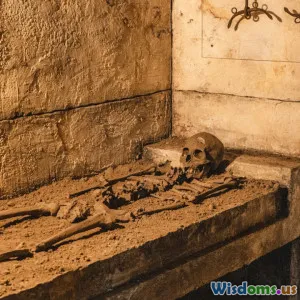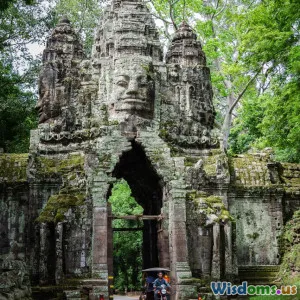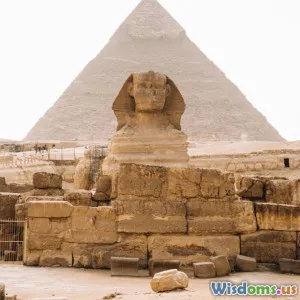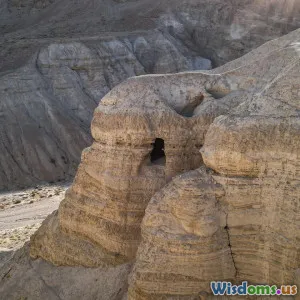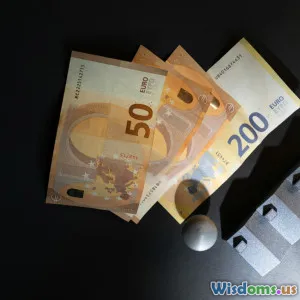
Comparing the Freemasons and Rosicrucians Origins Power and Legacy
10 min read Explore the contrasting origins, influence, and enduring legacy of the Freemasons and Rosicrucians in history and culture. (0 Reviews)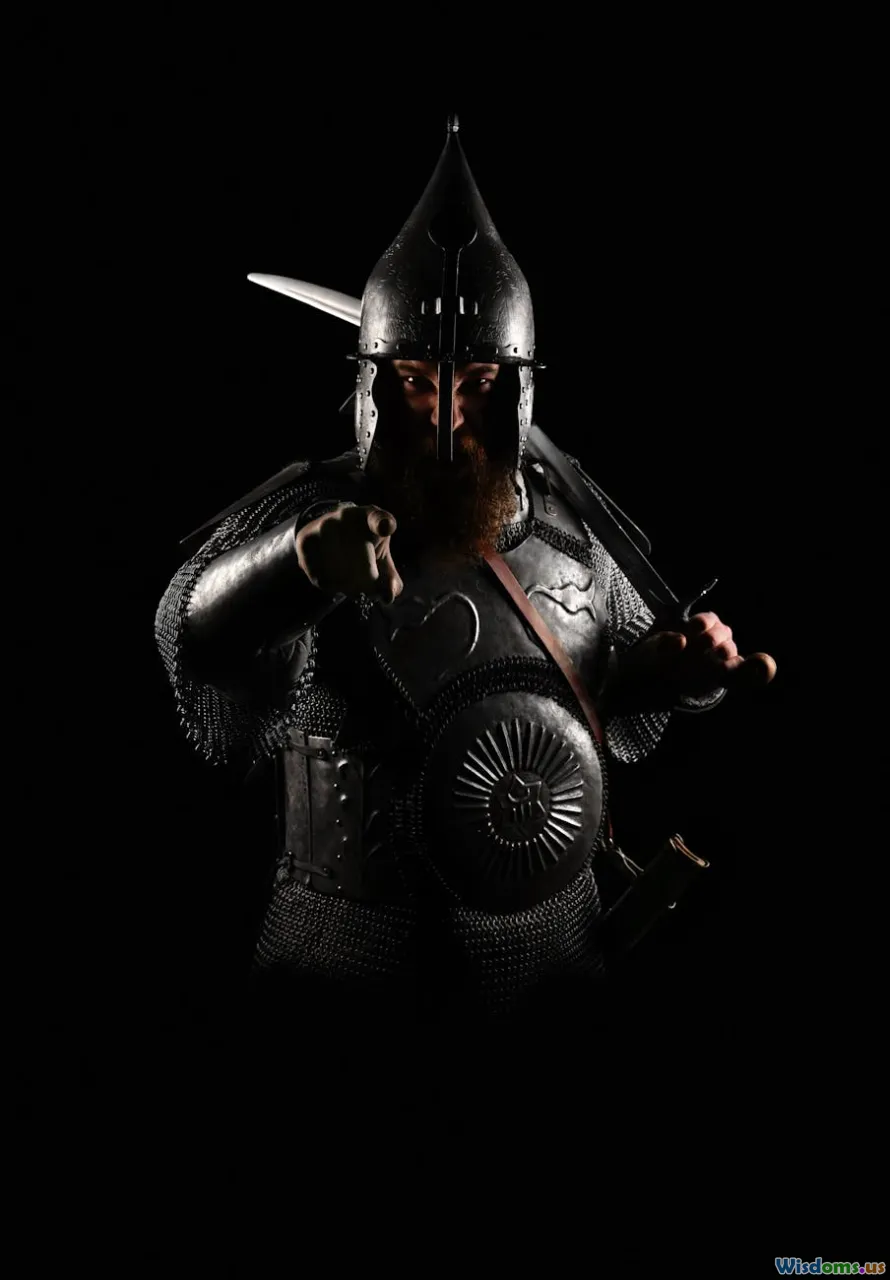
Comparing the Freemasons and Rosicrucians: Origins, Power, and Legacy
Secret societies have captivated the imagination, symbolizing mystery, knowledge, and hidden influence throughout history. Among these enigmatic fraternities, the Freemasons and Rosicrucians stand out as two of the most influential yet often misunderstood. Emerging in different eras with distinct focal points, they share overlapping themes in symbolism, philosophy, and impact. This article dissects their origins, explores their accumulated power, and assesses the legacies they left in culture, politics, and esotericism.
Introduction
Is there more to the Freemasons and Rosicrucians than shadowy symbols and whispered lore? Often conflated or conspiracy-theorized about, these groups each possess rich, complex histories intertwined with art, science, and governance. Scrutinizing their beginnings provides the groundwork for understanding their societal roles. By unpacking what influence and reach they commanded, we glean insight into how secret knowledge and social networks propagate. Ultimately, understanding their legacy helps demystify enduring contemporary fascination.
Origins: Foundations of Mystery and Brotherhood
Freemasons: Crafting Brotherhood from Stone and Symbol
Frequently regarded as the quintessential secret society, the Freemasons trace their formal establishment to June 24, 1717, with the creation of the Grand Lodge of England. However, their roots penetrate deeper—into the medieval guilds of stonemasons building Europe’s cathedrals. Originally a network of operating masons, these guilds evolved into speculative Freemasonry in the 17th century, transforming their craft-focused gatherings into philosophical fraternities.
This shift reflected changes in society and intellect, where the group began admitting 'accepted' members beyond operative masons, seeking enlightenment through allegory, symbols, and moral lessons framed around their stonemasonry tools. Their emphasis on enlightenment ideals, toleration, and rationality connected the fraternity to broader societal shifts during the Age of Reason.
Significant historical figures have been linked to Freemasonry, including George Washington, Benjamin Franklin, and Wolfgang Amadeus Mozart—hinting at the society’s ties to leadership and culture.
Rosicrucians: The Elusive Alchemists of Hidden Wisdom
The Rosicrucians emerged publicly in early 17th-century Europe through three anonymous manifestos: the Fama Fraternitatis (1614), Confessio Fraternitatis (1615), and Chymical Wedding of Christian Rosenkreutz (1617). These texts describe an allegorical brotherhood of mystics rooted in alchemy, Hermeticism, and Christian Kabbalah, holding esoteric wisdom aimed at transforming society spiritually and intellectually.
Unlike the Freemasons’ operational guild origins, Rosicrucians appear more as a symbolic or literary creation initially, with some historians debating whether the brotherhood ever existed as a formal organization before these documents. Nonetheless, the Rosicrucian manifestos touched a nerve in a Europe rife with religious conflict and scientific awakening, promoting ideas of secret wisdom essential for human progress.
Figures linked to Rosicrucianism include Johannes Valentinus Andreae (according to some scholars, a leading author behind the manifestos) and later influential thinkers influenced by its philosophies, such as Isaac Newton and Gottfried Wilhelm Leibniz.
Power: Symbolism, Influence, and Political Reach
Freemasons: Masonic Influence and Political Networks
The Freemasons rapidly gained stature in political, intellectual, and social domains. Their lodges became networking centers for elites, wielding influence during pivotal historical epochs. For example, during the American Revolution, many Founding Fathers were Freemasons, their principles echoing the fraternity’s values of liberty and equality.
Freemasonry structures its power through degrees and elaborate rituals fostering loyalty and discretion. These frameworks consolidated membership bonds and channeled collective action discreetly.
Internationally, Masonic lodges have been entwined in political maneuvers; for instance, in France, they were entwined in pre-Revolution intellectual circles. Moreover, Freemasons played complex roles in colonial administration, often serving as important colonial officers or reform advocates.
Nevertheless, their power is often exaggerated in popular myths, with modern scholarship highlighting more nuanced influences rather than omnipotent control.
Rosicrucians: Spiritual Power and Intellectual Symbolism
While lacking the Freemasons’ formal organizational presence, the Rosicrucians exerted soft power through their philosophical influence. They stimulated a fusion of science, olivetics, and spirituality during the Renaissance and early Enlightenment.
Rosicrucian ideals inspired scientific inquiry and metaphysical exploration, notably influencing the formation of the Royal Society in England, whose members sought to unravel natural laws much in line with Rosicrucian mysticism.
This society’s allure was in providing a spiritual narrative consistent with scientific progress, bridging gaps between faith and reason. Their purported wisdom pushed alchemy beyond magical practices into proto-chemistry, indirectly shaping modern sciences.
Despite controversies and skepticism from religious authorities, Rosicrucian thought permeated secretive circles, music, and literary works. Unlike the Freemasons' expansive lodge system, Rosicrucian communities were more fragmented and philosophical, centered around individual realization.
Legacy: Enduring Impact and Modern Relevance
Freemasons: Legacy of Civic Engagement and Cultural Influence
Today, Freemasonry persists globally with millions of members, renowned for charitable activities and community-building efforts. Its rituals and symbols continue to captivate artists, writers, and conspiracy theorists alike.
Freemason symbolism—such as the square and compass—permeates diverse cultural layers, from the founding documents of the United States to architecture and pop culture. The fraternity’s commitment to moral development and brotherhood echoes in modern values of pluralism and tolerance.
The open debates over Freemasonry’s role have pushed scholars to reassess secret societies’ functions. Its blend of secrecy and transparency allowed it to adapt over centuries without losing core identity.
Rosicrucians: Mysticism, Art, and Modern Esotericism
Though often eclipsed in public awareness by the Freemasons, the Rosicrucians left an indelible mark on Western esotericism. Contemporary Rosicrucian organizations continue promoting metaphysical knowledge, spiritual healing, and alchemical mysticism.
Their legacy underpins many modern New Age movements, influencing areas like meditation, holistic therapies, and alternative religious philosophies. The Rosicrucian emblem—typically a rose crossed with a mysterious symbol—has become a signifier of hidden wisdom and spiritual transformation.
Rosicrucianism’s emphasis on inner enlightenment anticipates later psychological explorations of the subconscious and self-actualization, linking them to thinkers such as Carl Jung.
Conclusion
The Freemasons and Rosicrucians, while sharing thematic ties in symbolism and a pursuit of knowledge, diverged in operation, influence, and legacy. Freemasons grew from operatives to influential social architects and political enablers trusted with civic leadership. Rosicrucians, more elusive and idealistic, shaped intellectual currents blending mysticism with scientific inquiry.
Together, they spotlight how secret societies harness symbols and narratives to shape cultural values across centuries. Understanding these groups requires not just unraveling legends but recognizing their practical historical roles in awakening human thought and fostering community.
In a world still fascinated by hidden knowledge, the study of Freemasons and Rosicrucians offers insights into how secrecy and symbolism continue to mold society’s ideals and mysteries.
References for deeper research include:
- Margaret C. Jacob, The Origins of Freemasonry: Facts and Fiction (PGP, 2007)
- Frances Yates, The Rosicrucian Enlightenment (Routledge, 1972)
- Robert Lomas, The Secret Science of Masonic Initiation (Samuel Weiser, 1996)
- Christopher McIntosh, The Rosicrucians: The History, Mythology, and Rituals of an Esoteric Order (Weiser Books, 1997)
- Joseph Fort Newton, The Builders: A Story and Study of Freemasonry (Dover, 2001 reprint of 1914 edition)
This article aims to offer clarity and contrast on two powerful fraternal traditions whose symbols and stories continue to inspire seekers across centuries.
Rate the Post
User Reviews
Popular Posts











